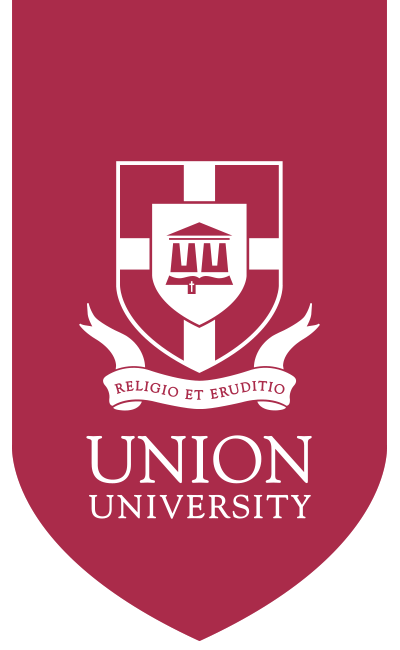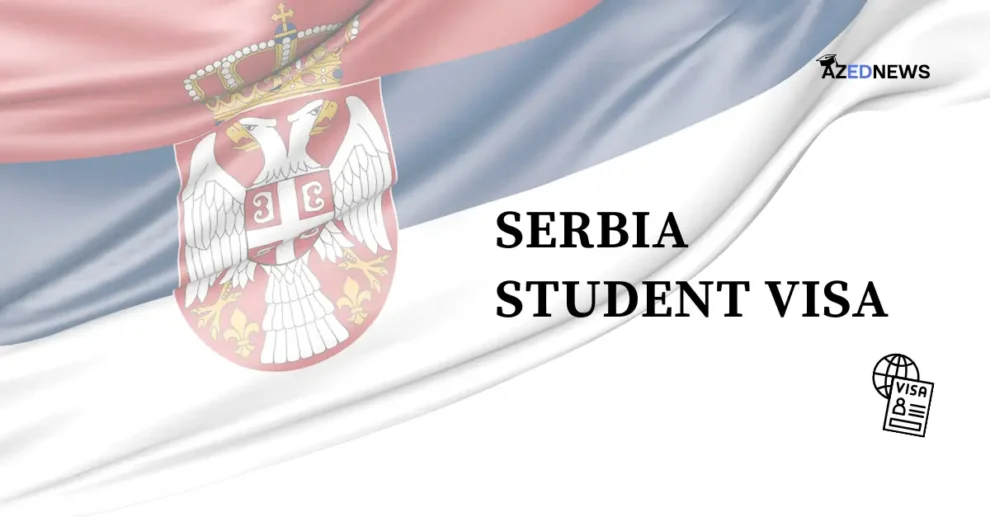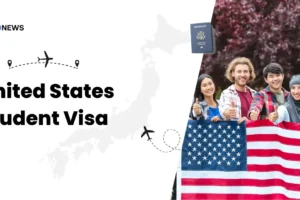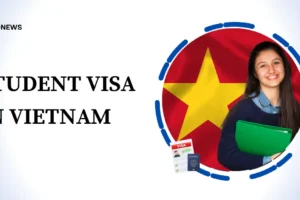Are you looking for information on Serbia Student Visa? then you are on the right article. Serbia is a country that shares its boundary with Hungary with Romania, Bulgaria, Macedonia, Bosnia and Herzegovina. The capital of Serbia, Belgrade is one of the biggest cities in Southeastern Europe. The population of Serbia is around 7.2 million.
Table of Contents
Choosing a college is one of the most important things in our lives. The universities, colleges, medical schools, engineering schools, and law schools throughout the country meet the standards of formal education with high standards and are well-known in academic circles.
In this blog, we have curated various details such as the Serbia student visa procedure, requirements, eligibility, and more.
Key Takeaways:
- Serbia is an ideal place to study for most international students since it has vast artistic traditions and the courses here broaden the research skills.
- Students who want to study in Serbia should be awarded a full-time scholarship at an educational institution and should provide proof that they have enough money to sustain themselves during the duration of their course.
- Applicants should submit their original passport along with their recent photographs and medical insurance among other documents.
- Various universities in Serbia are famous among international students such as the University of Nis and the University of Kragujevac.
- Additionally, there are tons of scholarships available for Serbian and international students alike.
Why should you study in Serbia?
1. Broaden your research skills:
The nation might be the right choice for you if you’re seeking a way to continue your study in biology, ecology, environmental science, or conservation outside of the classroom.
You can only use any library at any time of day for USD 20 per year as a student. Students in Serbia are helpful and friendly; you’ll find them to be willing to help. It will be easy for you to become immersed in a research-focused environment.
2. Experience the arts in Serbia:
For those pursuing studies in visual art, music, literature, or even culinary arts, the nation could be an excellent option for pursuing your goals. Serbia’s vibrant and multifaceted culture includes several regionally distinctive artistic traditions, encompassing both fine art and handicrafts.
The locals are particularly well-known for their handicrafts, which include drums and masks, and for their use of pastel colors and pastoral scenes.
3. Become more proficient in Serbian:
For interested international students, the nation offers a wide range of educational options. The nation might have something for you, whether your goals are to hone your Serbian language abilities in an exciting and distinct European nation.
But do remember that every country has its unique minimum IELTS band requirements. For example, IELTS band requirements in the UK can differ from that in Serbia.
Immerse yourself in the music and artistic traditions of the area, or seize an alternative opportunity to apply your history lessons to real-world situations.
Who needs a visa for Serbia?
Students applying from the countries given below will not have to apply for a visa if they plan to visit Serbia for three months within 180 days:
- All the EU citizens
- Grenada
- Oman
- Albania
- Holy See
- Palau
- Andorra
- Iceland
- Peru
- Antigua and Barbuda
- Israel
- Qatar
- Argentina
- Japan
- Saint Kitts and Nevis
- Armenia
- Kosovo
- San Marino
- Australia
- Kuwait
- Seychelles
- Azerbaijan
- Kyrgyzstan
- Singapore
- Bahrain
- Liechtenstein
- South Korea
- Bolivia
- Macau
- Switzerland
- Bosnia and Herzegovina
- Mexico
- Trinidad and Tobago
- Brazil
- Moldova
- Tunisia
- Canada
- Monaco
- Turkey
- Chile
- Mongolia
- Ukraine
- Costa Rica
- Montenegro
- United Arab Emirates
- Cuba
- New Zeland
- United Kingdom
- Dominica
- North Macedonia
- The United States
- Georgia
- Norway
- Uruguay
Additionally, applicants are exempted from Serbian visas if they wish to stay for 30 days within one year and are from one of the countries given below:
- Bahamas
- Colombia
- Indonesia
- Barbados
- Guinea-Bissau
- Paraguay
- Burundi
- India
- Saint Vincent and the Grenadines
Is Serbia in Schengen?
Serbia is not a part of the Schengen Agreement or of the EU. However, the citizens of Serbia do not require a visa to visit the Schengen countries for short trips. Moreover, Schengen citizens also do not require a Serbian visa for short periods.
What are the types of Serbian Visas?
There are two types of Serbian visas. They are:
1. Short stay or C visa:
A short-stay visa permits students to stay in Serbia for three months within 180. A short-stay visa is often issued for:
- Traveling with school for educational purposes
2. Long stay or D visa:
The long stay visa or D visa allows students to stay in Serbia for about one year. This visa is issued for:
- Study purposes
What are the eligibility criteria for a Serbia student Visa?
- To confirm that a candidate has been awarded a spot in a full-time course of study at an accredited educational institution, they must submit a letter of acceptance.
- Applicants must be able to provide proof that they have enough money in the nation to maintain themselves.
- Proof that the course fees have been paid in full must be provided.
- Documentary proof of the arrangement for private medical insurance must be shown.
- After their study term, the candidate must intend to return home.
- The rules, regulations, and formalities about national immigration should be respected and followed by all immigrants to Serbia.
- Only authorized and licensed training institutions may conduct the study.
What are the requirements for a Serbia student visa?
Applicants are required to submit certain documents to earn a Serbia student visa. The documents are:
- An original passport with at least 2 blank pages.
- Applicant must submit 2 recent passport photographs.
- An acceptance letter from the Ministry of Education of Serbia in a college or university.
- All the required educational documents.
- A language proficiency certification. This could be IELTS scores or TOEFL scores.
- Proof that the tuition fees were paid for one year after getting the acceptance letter.
- Applicant should submit proof of sufficient financial means of support for the entire period specified in the visa.
- A certificate proof of criminal history or another document with equal legal validity.
- Medical insurance for the entire course of stay as per visa’s validity.
How do I apply for a Serbian visa?
You must submit your visa application to the Republic of Serbia’s foreign embassy or consulate to obtain a Serbian visa. For a simpler application process, stick to the following steps:
1. Contact your nearest Serbian embassy or consulate:
Make an appointment for your visa application by getting in touch with the Serbian embassy or consulate that is closest to you in your home country. The appointment is required to expedite the processing of your visa application.
2. Gather the paperwork needed to apply for a visa:
Make sure you collect all the required paperwork. You should receive a comprehensive list of the documents you must submit from the embassy.
3. Deliver the paperwork to the Serbian consulate or embassy.
Once you have gathered all the necessary paperwork, you need to deliver it to the Serbian embassy or consulate that is closest to you. Arrive on time for the appointment.
4. Await a response:
Once you have completed all the required steps, you will need to wait for a response. The same embassy where you filed your visa application will send you an email or text message containing your visa response.
Where to apply for a Serbian visa?
Applicants can send an application to any Serbian embassy or consulate in their home country. It should be noted by applicants that they may need to make an appointment for an interview at the consulate or embassy.
It is also crucial to remember that there isn’t an e-Visa or an online application for a visa to Serbia unless you need to apply for a residence permit or a visa extension, in which case you’ll need to have a long-stay visa (Visa D) that was previously granted by the Republic of Serbia’s diplomatic or consular mission abroad.
Therefore, paper applications must be submitted by all applicants.
What is the fee for a Serbia visa?
Depending on how long a student is planning to stay, they must pay the following fees:
- For a short-stay visa:€60
If the Serbian administration issues a short-stay visa, applicants are expected to pay an extra €2 for the visa sticker.
- For a long-stay visa:€30
If your visa is issued by Serbian officials, you will need to pay €2 for your sticker.
What is the process time for a Serbian visa?
A Serbian visa can be processed in five to twenty-one working days. The embassy will notify you via email or SMS about the status of your visa application. The embassy may require more time to process your visa application if you submit it during the summer or a holiday.
Top Serbian Universities for International Students:
Serbia has a great standard of education. There are various universities in Serbia for foreign students that have made the list of world university rankings. Some of the top universities in Serbia for international students are:
1. University of Nis:
The University of Nis was founded in 1965. The university has around 75,000 students enrolled from all over the world. It is highly affordable and consists of 13 faculties most of which are located in Nis, the second largest country in the country.
| Acceptance rate | 80% |
| Semester tuition fees | €900 |
| Monthly cost of living | €300 |
| Popular courses offered | Mathematics & Informatics Geography & AgricultureBiology, Health & MedicineBusiness, Finance & EconomicsEngineering & TechnologyArts, Design & Music |
| Location | Niš |
2. University of Kragujevac:
The University of Kragujevac is one of the first higher education institutions in Serbia. It was established in Kragujevac by the decree of Prince Milos Obrenovic on July 1st, 1838.
Currently, the university is one of the best modern research centers which has almost all major areas of teaching and research with about 20,000 students enrolled in the program.
| Acceptance rate | 70% |
| Semester tuition fees | €900 |
| Monthly cost of living | €300 |
| Popular courses offered | Languages, Literature & EducationBusiness, Finance, and EconomicsPolitics, History & LawEngineering & Technology |
| Location | Kragujevac |
3. University of Belgrade:

The University of Belgrade is the oldest and largest university in Serbia. The main courses in the field of higher education and scientific research are related to public interests and are carried out legally.
| Acceptance rate | 70% |
| Semester tuition fees | €3500 |
| Monthly cost of living | €300 |
| Popular courses offered | Biology, Health, and MedicineDental MedicineMedicinePharmacyTechnology & MetallurgyArchitecture |
| Location | Belgrade |
4. Academy of Arts Belgrade:
The Academy of Arts in Belgrade is a private higher education institution. It was founded by Aleksandar in 1994 and is one of the most popular colleges in Serbia.
This university often witnesses students flocking from all over the globe for courses such as film, sound design, acting, and more.
| Acceptance rate | 75% |
| Semester tuition fees | €5000 |
| Monthly cost of living | €300 |
| Popular courses offered | Arts, Design & MusicFilm & television direction and editingMusic production and sound designPhotography and cameraArt and media image creationProduction in art and media |
| Location | Belgrade |
5. Metropolitan University:
The Metropolitan University is a privately owned university which was located in Belgrade, Serbia.
Information technologies, information systems, software engineering, computer games, engineering and operations management, business and marketing management, management in sports, graphic design, interactive media design, and fashion design are just a few of the scientific and artistic fields that Belgrade Metropolitan University introduces students to.
| Acceptance rate | 84% |
| Semester tuition fees | €7000 |
| Monthly cost of living | €450 |
| Popular courses offered | Game developmentInformation technologiesSoftware engineeringInformation systemsEngineering and operations management |
| Location | Belgrade |
6. University of Novi Sad:
The University of Novi Sad was founded in 1960 with around 50,000 students enrolled and around 5,000 employees. It is one of the largest educational and research centers in Central Europe.
This university belongs to a group of universities that are characterized by providing nearly all fields of science and higher education.
| Acceptance rate | 80% |
| Semester tuition fees | €500 |
| Monthly cost of living | €450 |
| Popular courses offered | Production engineeringEnergy and process engineeringMechanics and Technical DesignComputer and control engineeringPower, electronic, and telecommunication engineering |
| Location | Novi Sad |
7. State University of Novi Pazar:

In Serbia, there is a public institution called the State Institution of Novi Pazar. One of the biggest research and education hubs in Central Europe, it was established in 2006 and is divided into eleven faculties, with its main office located in Novi Pazar.
It is a member of the comprehensive university group, which is distinguished by offering practically all subjects of higher education and science.
| Acceptance rate | 83% |
| Semester tuition fees | €6000 |
| Monthly cost of living | €450 |
| Popular courses offered | Politics, history, and lawGeography & agricultureBiology, health & medicineBusiness, finance & economicsMathematics & informaticsHumanities & Social Sciences |
| Location | Novi Pazar |
8. Singidunum University:
Singidunum University is a university that provides undergraduate, graduate, and postgraduate courses in three scientific domains: technical sciences, natural sciences and mathematics, and social sciences and humanities.
The actual University was founded on January 17, 2005. The studies in three scientific domains: technological sciences, natural sciences and mathematics, and social sciences and humanities are served in this university.
The University was officially constituted on January 17, 2005, while the first faculty was founded in 1999.
| Acceptance rate | 83% |
| Semester tuition fees | €1500 |
| Monthly cost of living | €450 |
| Popular courses offered | Tourism & hotel managementMathematics & informaticsEngineering & technologyMedia & communicationPolitics, history & lawSports & physical education |
| Location | Belgrade |
9. Union University:

The headquarters of Union University, a university in Serbia, are located in Belgrade. It was established on June 21, 2005, and as of the present academic year, it enrolled 3,114 students, making it the seventh-largest private university in Serbia.
| Acceptance rate | 52.6% |
| Semester tuition fees | €4000 |
| Monthly cost of living | €450 |
| Popular courses offered | Engineering Computer programmingInformation technologiesSoftware engineeringInformation systems |
| Location | Belgrade |
10. Megatrend University:

Situated in New Belgrade, the Serbian city of Belgrade, Megatrend Institution is a private institution. Megatrend University was established in 1989, first known as the Megatrend Business School.
The University of Megatrend was renamed University John Naisbitt by the Council in 2015.
| Acceptance rate | 75% |
| Semester tuition fees | €4000 |
| Monthly cost of living | €450 |
| Popular courses offered | Public administrationEconomicsInternational economics and financeInternational business economicsArts, design & musicPolitics, history and law |
| Location | Belgrade |
Scholarships in Serbia:
Students from Serbia who are looking for undergraduate scholarships, master’s scholarships, or Ph.D. scholarships are advised to regularly check the latest international scholarships introduced for international and local students announced by foreign universities and governments.
Scholarship options for students who want to study here range from those offered by private colleges and universities to those that are federally supported.
Since the topic of study in some of these programs is exclusive to one nation, competition is fierce, but they make up for it by providing substantial scholarships or even full tuition to deserving students, particularly those from disadvantaged backgrounds.
What if your Serbia visa is denied?
If your application for a Serbian visa is rejected, you need to get in touch with the Serbian embassy to find out why. Following that, you can:
- Submit a new application for your Serbian visa or challenge the decision; you can send a letter of appeal to the Serbian embassy.
- There are various reasons why your visa could be denied. Some common reasons are
- if you submit documents that include inaccurate data.
- if there is damage to your passport.
- if you fail to complete the payment of the application cost for your visa.
- if you are unable to provide all of the required documentation.
How to get a residence permit for Serbia?
You can apply online or in person at the Police Directorate in the City of Belgrade to apply for a residence permit in Serbia. Make sure you include these documents with your application for a residency permit:
- Passport
- bank statements
- Application form
- Fee payment receipt
- Health insurance papers
- Two passport-sized photos
- Registration of your address in Serbia
Frequently Asked Questions
How can I get a student visa for Serbia?
Prerequisites for a Serbia student visa include:
– Valid passport
– Acceptance letter from an academic institution in Serbia
– Completed visa application form
– A color photograph
How much is the Serbian visa fee?
The following fees are required, and they vary depending on how long you intend to remain in Serbia: For a visa for a brief visit: €60. You will need to pay an additional €2 for your visa sticker if your short-stay visa is issued by the Serbian administration. €30 for a long-term visa.
Can I work as a student in Serbia?
If students discover that they need extra money, they are permitted to work part-time while on a student visa. A temporary residency visa is required for foreign students who plan to study in Serbia for more than ninety days.
Can I work in Serbia with a tourist visa?
For work-related purposes, foreign nationals must obtain a work visa, which is a version of the long-stay (D) visa. They also need to obtain a temporary residency permit and a work permit for Serbia.
How can I get PR in Serbia?
One year following the initial approval of your Serbian residency, you are eligible to become a tax resident of Serbia. It takes eight years to become a naturalized citizen of Serbia. It takes five years to get permanent residence status, which in turn requires at least three years of continuous residency.
Conclusion:
An international student has the chance to temporarily relocate to Serbia to pursue a course of study there by using a student visa.
Undergraduates from all over the world are choosing to study in Serbia more and more since the country has a long tradition of academic success and a wide range of educational institutions.
The excellent standard of living that can be found in Serbia, along with a relatively lax immigration law, have contributed to the country’s notable increase in immigration in recent years.












Add Comment